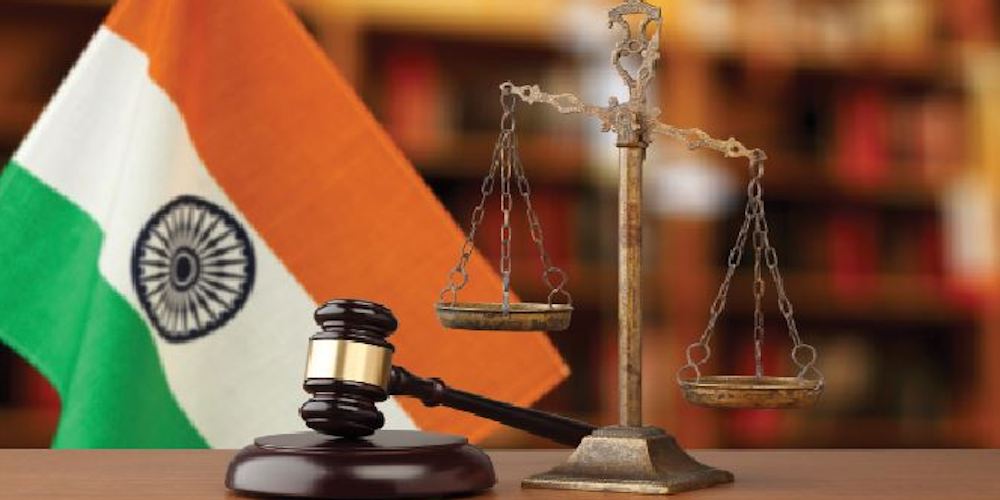Time for an All-India Judicial Service

National Judicial Appointments Commission and All-India Judicial Service exams are necessary to stop dynastic self-perpetuation in the higher judiciary
Does an opaque institution deliver justice and, more importantly, be seen to deliver justice, even when its members are exceptionally bright, diligent, conscientious, and possess unquestionable integrity?
Indeed, at the very outset, it must be put on record that this column doesn’t doubt the intellectual ability, academic rigour, and judicial competence of Chief Justice of India (CJI) DY Chandrachud and his fellow judges in the Supreme Court. The question is about the collective silence of those at the helm of our judicial system to President Droupadi Murmu’s suggestion on Constitution Day 2023 regarding the creation of an All-India Judicial Service (AIJS)—to diversify the judiciary by recruiting “brilliant youngsters” from across the country to become judges through a merit-based process.
Her remarks have revived the debate on the existing system of recruitment, promotion, and filling positions in the judiciary at all levels. This includes roles ranging from the entry-level judicial magistrates and munsifs in sub-district courts to district judges, and high court and the Supreme Court justices. This column examines the issue from the viewpoint of constitutional provisions, the intent of the founding members of the Constituent Assembly, the political consensus, and judicial obduracy, while also addressing arguments against the AIJS.
First things first. On the face of it, the National Judicial Appointments Commission (NJAC) and AIJS are distinct. The NJAC is about the appointment of the judges to the Supreme Court and high courts, whereas the AIJS is about the feeder cadre. However, both strike at the very root of dynastic self-perpetuation in the higher judiciary.
Let’s begin with some empirical data. In a YouTube video, advocate and author Sanjay Dixit stated that 20 out of the 25 chief justices of high courts were related by blood or marriage, or years of servitude as a junior to justices of high courts and the Supreme Court.
In his recent column, the former Attorney-General of India, Soli Sorabjee wrote about nepotism in the judiciary. He quoted the Punjab and Haryana High Court Bar Association’s memorandum of 5 May, which was signed by 1,000 advocates. “It has now become a matter of practice and convenience to recommend the names of those advocates who are the sons, daughters, relatives and juniors of former judges and Chief Justices,” without reference to their merit.
Even more stringent criticism came from Justice Rang Nath Pandey (retd) of the Allahabad High Court. He alleged that the high court collegiums deliberately delayed the promotion of judges from the bench to ensure the perpetuation of the near monopoly of the Bar.
This effectively blocks their entry to the Supreme Court where, since Independence, only six non-members of the Bar have been appointed as judges. SK Das, KN Wanchoo, KC Das Gupta, R Dayal, V Ramaswami, and V Bhargava were part of the colonial Indian Civil Services. Among them, only Wanchoo served as the CJI in 1967-1968. After him, no jurist has been elevated to the top court even though a provision for the same exists under Article 124(3) of the Constitution.
It is therefore important to delve into Articles 124 and 217 of the Constitution, which deal with the appointment of judges to the Supreme Court and high courts, respectively. According to these provisions, the President will appoint every judge of the Supreme Court after consultation with such judges of the Supreme Court and of the high courts that the President may deem necessary for the purpose, and every judge of the high court after consultation with the CJI and the governor.

However, over the years, the Supreme Court has made consultation synonymous with collegium, a system that was rejected three times by the Constituent Assembly. BR Ambedkar, who was the Chair of the Drafting Committee had called it ‘dangerous’. He had also emphasised that apart from being independent, the judiciary needs to be ‘competitive’ as well.
Therefore, the genesis of a merit-based and competitive judiciary can be traced back to the debates of the Constituent Assembly itself. The idea of an AIJS was mooted by the 14th Law Commission in 1958, just two years after the States Reorganisation Commission (SRC) recommended the creation of the Indian Forest Service.
The AIJS was favoured by the Chief Justices’ Conferences in 1961, 1963, and 1965. And in 1976, Article 312 was amended through the Constitution (42nd Amendment) Act to provide legal sanction for the creation of an AIJS based on a resolution passed by the Rajya Sabha with a two-thirds majority. Consequently, as things stand today, there is no legal hurdle in the establishment of AIJS.
On the other hand, the NJAC was established through the Constitution (99th Amendment) Act after a broad political consensus. It was ratified by Parliament as well as 20 state legislatures to replace the collegium system. However, the Supreme Court struck it down on grounds that it was against the ‘basic structure of the Constitution’. But as mentioned earlier, it may be pointed out that the collegium system, currently in vogue, does not have any constitutional sanction. Several commissions and parliamentary committees have found flaws in it.
Let us now look at the ethical dimensions of the current system, which is non-transparent and heavily biased in favour of those who are well entrenched in the legal fraternity, thereby making it extremely difficult for new entrants to break the glass ceiling. Out of the women who pass the State Judicial Service examinations, only one-tenth end up in the Supreme Court and high courts.
The representation of SCs, STs, and OBCs is also quite meagre, and the National Commission for Scheduled Castes has gone on record asking for a change in the collegium-based system of induction.
One argument against AIJS is about the uneven quality of legal education across states, with the possibility that candidates from some states may get the extra edge. While this was a valid point until the turn of the century, now there are 26 National Law Universities (NLUs) in India, each of which either has a Supreme Court judge or the Chief Justice of the state as the Chancellor.
Admission to these NLUs is through the highly competitive Common Law Admission Test (CLAT), with a success rate of less than 5 per cent. If there was an AIJS, many bright women and men would likely be inspired to take the exam, especially if it offered a career path leading to the high courts after two decades of service, thereby opening the possibility of elevation to the Supreme Court.
Over time, the number of judges from the bench must exceed those from the Bar, as they are less likely to have their ‘kith, kin and practise partners’ in the same court. This is why the NITI Aayog, in its paper on India@75, strongly recommended the AIJS for both ease of living and ease of doing business.
Then there is the issue of language, which has been addressed by the 116th Law Commission report. Officers of All India Services (AIS) receive formal training in the language of their state. And in any case, prior to the reorganisation of states in the 1950s and 1960s, large states like Bombay, Bengal, Assam, and Punjab were actually bilingual or trilingual and yet administered through a single judicial service.
Additionally, in the proposed framework for AIJS, there would be five geographical zones to choose from, and most selected candidates would likely get their home state or a neighbouring one. It should be fairly easy for an aspirant from Haryana to pick up the nuances of Punjabi, Dogri, Himachali and the dialects of Rajasthan, especially if she has cracked the AIJS exam.
Last but not the least, ushering in transparency into the processes of judicial appointments actually strengthens, rather than weaken, the judiciary. The oft-quoted Kesavananda Bharati case about the ‘basic structure’ is not relevant here because the collegium was never a part of the basic structure—it is rather a case of judicial overreach.
Justice must not only be done; it must seem to be done. Justice Rang Nath Pandey rightly wrote in his letter to Prime Minister Narendra Modi: “The Supreme Court struck down the Act [NJAC] as it would have affected its powers of making the appointments.”
(Sanjeev Chopra is a former IAS officer and Festival Director of Valley of Words. Until recently, he was Director, Lal Bahadur Shastri National Academy of Administration. Views are personal)


